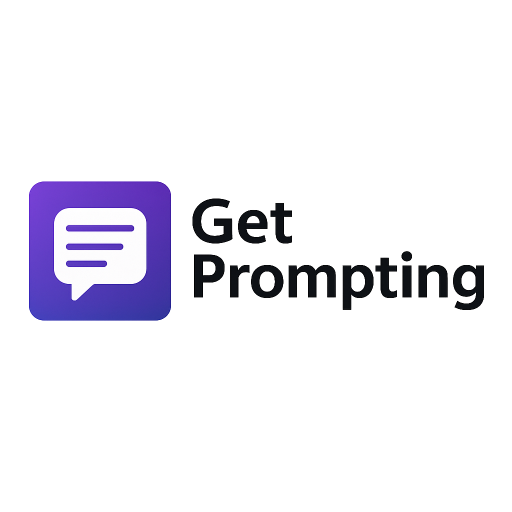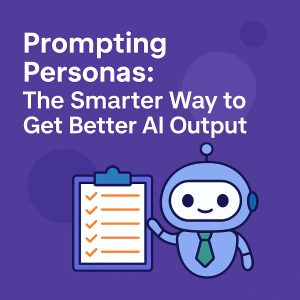Prompting Personas: The Smarter Way to Get Better AI Output
If you’ve ever used ChatGPT and thought, “Why does this response feel… off?” You’re not alone. You might have used the right words, had the right idea, and still ended up with output that felt generic, too formal, or just not useful.
It’s not that the AI is broken. Most of the time, the problem is the lack of context. And one of the fastest ways to give that context is by using something called prompting personas.
So, What are Prompting Personas?
In simple terms, a prompting persona tells the AI who it should act like before it answers you. It gives the model a role, a tone, and a point of view. You’re not just prompting, you’re casting a character.
Instead of asking:
“Can you give me ideas for an article?”
You ask:
“Act as a blunt, senior copywriter helping a junior writer brainstorm article hooks that would grab attention on Instagram.”
Same request. Totally different outcome.
That’s the power of prompting personas.
Why Prompting Personas Work
A lot of people treat AI like Google. But the real magic happens when you treat it like a collaborator.
When you assign it a role, you:
Plus, it makes prompting more fun. Which, let’s be honest, helps you use it more consistently.
4 Prompting Personas I Use All the Time
These are actual personas I’ve used across writing, product building, and workflow design. They’re in my Prompt Vault, and I come back to them constantly.
1. The Blunt Copy Chief
Use case: Editing or rewriting anything that sounds boring or bloated.
Prompt:
“Act as a blunt, fast-moving copy chief. Rewrite this intro to hook attention in 10 seconds or less. Be sharp, punchy, and get to the point.”
This persona cuts fluff instantly. I use it to rework intros, landing page headlines, and even social media hooks.
2. The Socratic Coach
Use case: Brainstorming ideas or making decisions when you feel stuck.
Prompt:
“Act as a Socratic-style coach. Don’t give answers. Ask me questions to help clarify my thinking and expose assumptions.”
This is how I debug my own brain when I can’t see the real problem.
3. The Workflow Architect
Use case: Building systems, step-by-step plans, or Notion workflows.
Prompt:
“You’re a systems thinker and process architect. Help me design a weekly routine that balances deep work, creative time, and admin tasks.”
This persona is baked into how I designed the Second Brain template and the upcoming app. It helps me zoom out and design like a strategist.
4. The Casual Research Assistant
Use case: Summarizing articles, reports, or gathering resources without robotic language.
Prompt:
“You’re a chill research assistant helping me prep for a podcast episode. Summarize this article casually, like you’re explaining it to a smart friend.”
This works great for avoiding the overly formal “academic” tone that GPT sometimes leans toward.
Note: These are 4 great prompts to store in your Prompt Vault (included in the Free AI Prompt Pack) or store inside the GetPrompting Notion Second Brain Template.
How to Build Your Own Prompting Personas
The best part? You can create your own in seconds.
Here’s a quick formula:
Put it all together like this:
“Act as a [tone] [role] helping me [objective].”
Example:
“Act as a skeptical productivity coach helping me cut my to-do list in half.”
That’s it. You’ve now given the AI just enough structure to act like a teammate instead of a trivia machine.
Why This Matters
Prompting personas are one of the most underrated tools in AI productivity. They help you:
Most people overcomplicate prompting. But honestly, giving the AI a job title and a vibe is often enough to double your results.
If you’re building your own Prompt Vault, this is one of the first things I’d add. I also shared how I use AI prompts for productivity in this post. It pairs well with this one if you want more real examples.
Try it this week. Pick one task you’d normally struggle through and assign it a persona instead. You might be surprised how much easier it feels.
Michael
Creator of Get Prompting

